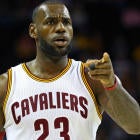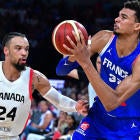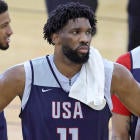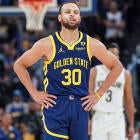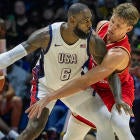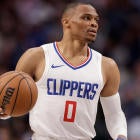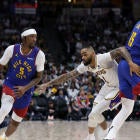The new collective-bargaining agreement has been agreed upon in principle, and if you thought the deals were big last summer, wait until you see what guys are getting next year.
For years, LeBron James has been dancing with one-year deals as the salary cap has skyrocketed. With no injury concerns and the ability to demand whatever deal he wants, he has consistently taken short term deals with an opt out, his next up in 2018. Part of this was due to uncertainty over what the new CBA would look like. Chris Paul, meanwhile, was facing a reduced-salary option due to the "Over 36" rule that prevents players from signing max deals that go over the player's age of 36. And Kevin Durant similarly has been waiting for the big payday after signing a one-year deal with the Warriors this summer.
All of that's changing with the new CBA, however. Everyone makes more money in the new CBA, on the players' side. While the split of Basketball-Related Income remains the same (51-49 with the players getting 51 percent), cap exceptions, minimum contracts, etc. are all now based on a percentage of the salary cap, which will increase from the old figures with the new media money.
It's not merely the lower-rung players who will get more money, however. As NBA.com's David Aldridge reports, the new CBA will include a revision to the "Over 36" rule and an increase in the number of years and maximum money for max contract players.
Significant increases across the board in player contracts, including maximum salaried players. Minimum salaries for veterans with 10 or more years of service, players with five or more years' service, rookie players on their rookie scale contracts and salaries of players who sign under the mid-level exception will all increase. The bi-annual exception will also increase. The expected maximum salary in 2017-18 for a player with 10 or more year's service--including many of the game's superstars, like LeBron James, Kevin Durant and Chris Paul, each of whom can become an unrestricted free agent next summer, will be $36 million, allowing a player to sign a five-year deal with his existing team for around $210 million. The maximum salary for players with between 7 and 9 year's experience is projected to be $31 million. All of the contracts will be tied to the salary cap, which is different from the previous CBA. Such huge deals for vets with that much service time have been next to impossible to create in recent years because of the so-called "Over 36" rule, which was put in place to keep teams from signing older players to long contracts they would never reach the end of in order to ease the financial burden on the team. The current rules takes the salary of a player 36 or older and applies it to previous seasons' salary caps--in essence, forcing the team to pay for those over 36 years before they occur. The new CBA, however, will turn "Over 36" contracts into "Over 38" contracts, allowing teams to sign older players to longer deals.
Source: NBA, NBPA reach tentative new seven-year CBA agreement - NBA.com.
Say goodbye to Mike Conley's paltry $153 million deal signed his summer. The superstars of July are signing deals worth $210 million.
For LeBron James, given that the salary cap is set to stabilize and possibly slightly recede in coming seasons, he's most-likely taking that kind of deal when he's up in 2018. It secures him through 2023 when he'll be 38. If he wants to keep his options open, he can take the smaller deals, something along the lines of a two-year, $61 million contract -- and man, just writing that is insane.
For Chris Paul, it's notable that Paul, who will be 32 this summer, will be able to sign a five-year guaranteed $210 million deal he helped negotiate as the President of the Players' Union. Paul obviously has more than merely his own interests to keep in mind, and as I said earlier, every player at every level benefits from this renegotiation and increase in salary amounts. But Paul is also the beneficiary of a deal that enables the Clippers to re-sign him to a fifth year at $31 million (or more, depending on the cap).

For Durant ... it's complicated. This article pointed out even under the old system how if Durant chooses to opt out and not re-sign using what are called "Non-Bird Rights" that basically, the Warriors would be hamstrung. So Durant's going to have to either stay another year under a deal making $10 million less (unlikely), re-sign using Non-Bird Rights and make less money, or go somewhere else on a max deal, but even then he can't sign for five years. The Warriors will figure out a way to make this work, but it's looking more and more like the Warriors are going to have a hard time down the line making upgrades.
As an example, if Durant and Curry wind up signing, at any point, for the max at $36 and $31 million respectively, the total for those two, Klay Thompson, and Draymond Green will be just over $101 million.
And finally, there's Carmelo Anthony. Anthony will be a free agent in the summer of 2018. Let's say that everything with the Knicks remains the same. Phil Jackson's still in charge, James Dolan is still the owner, and Anthony wants to remain in New York. The Knicks would have to choose between letting Anthony go or re-signing him on a deal that would pay him upward of $35 million at age 37. Not a wonderful idea for Knicks fans to contemplate as Kristaps Porzingis comes into his own.
Either way, a whole bunch of players are getting money that's going to make Mike Conley's deal look like chump change.









